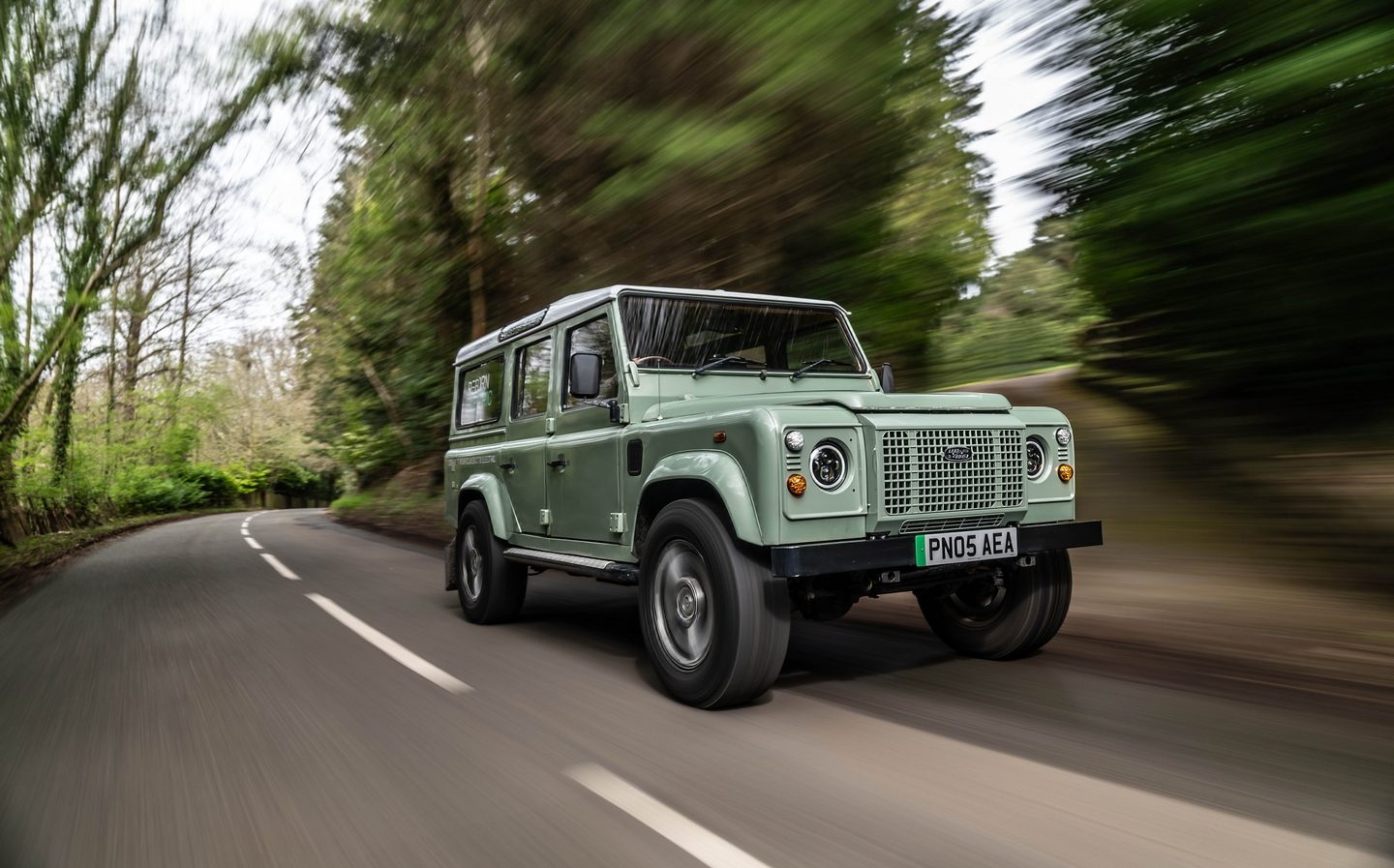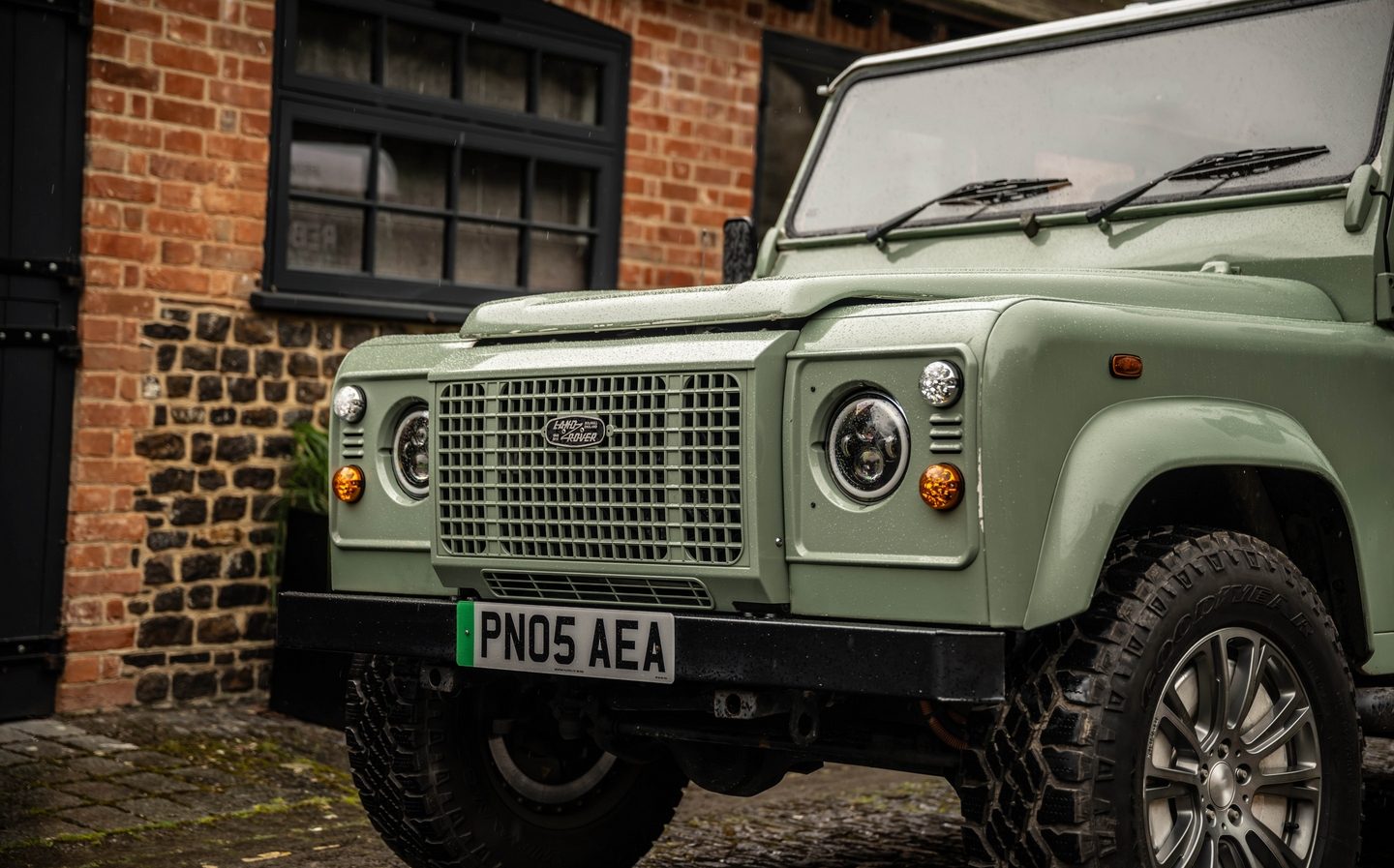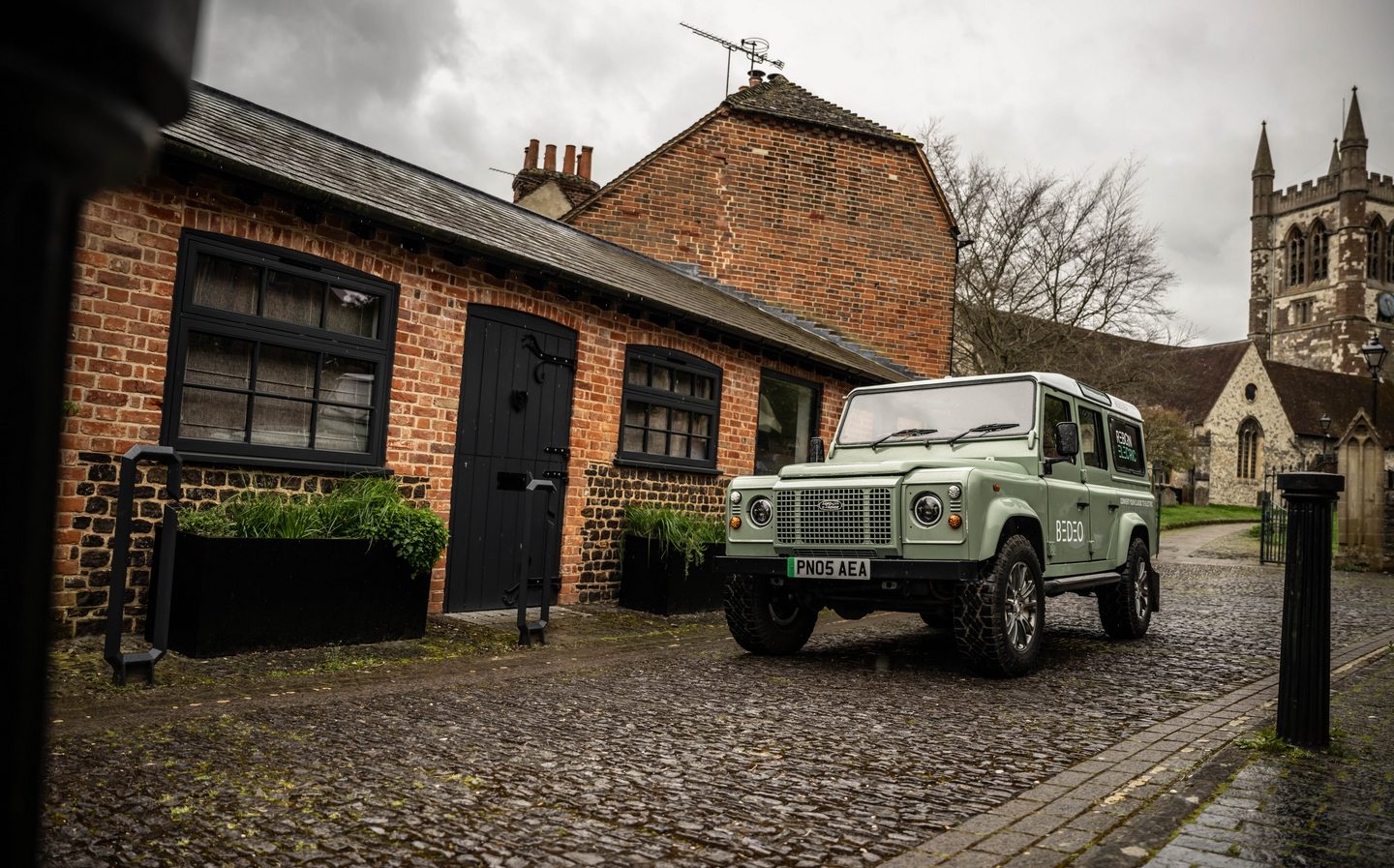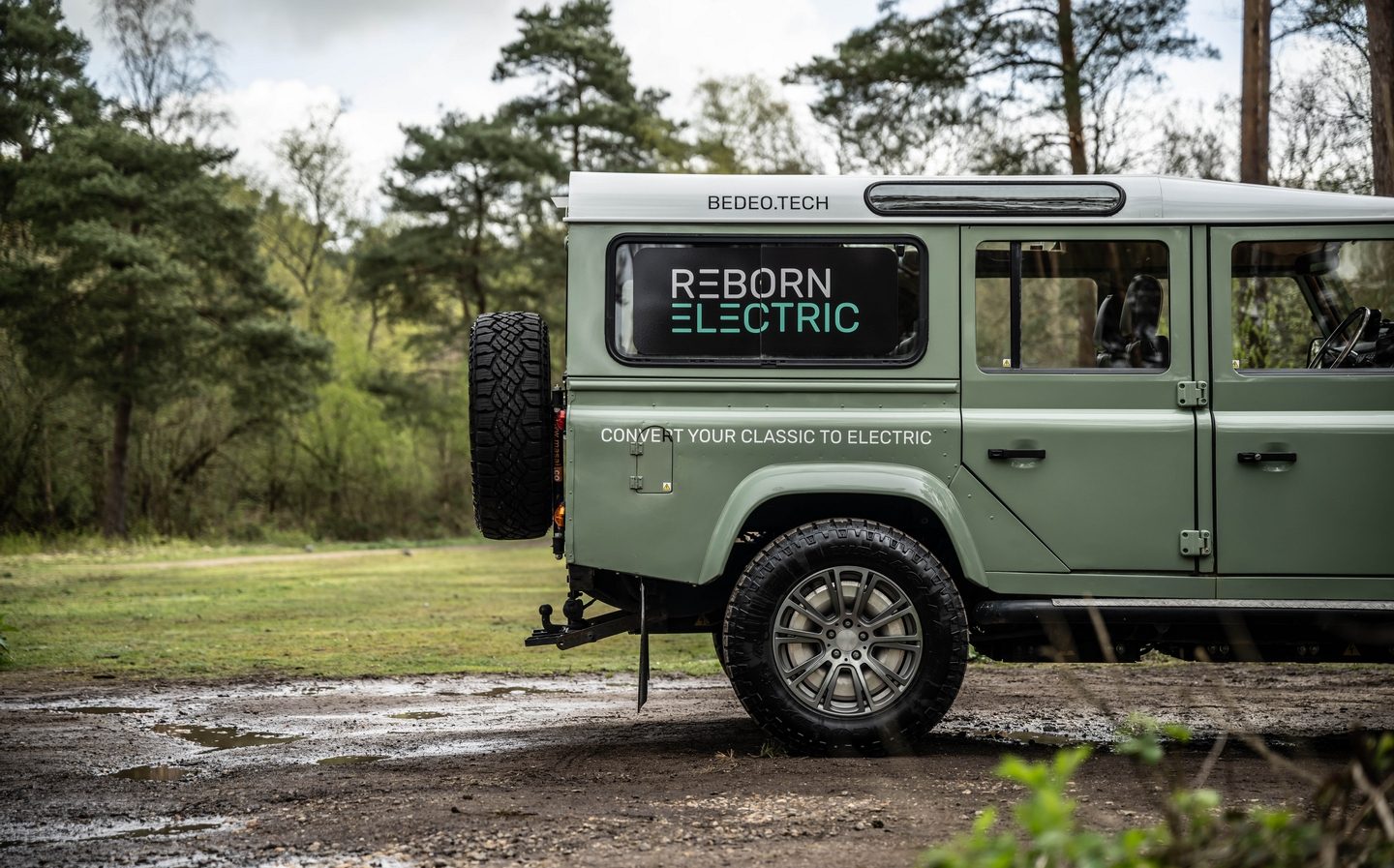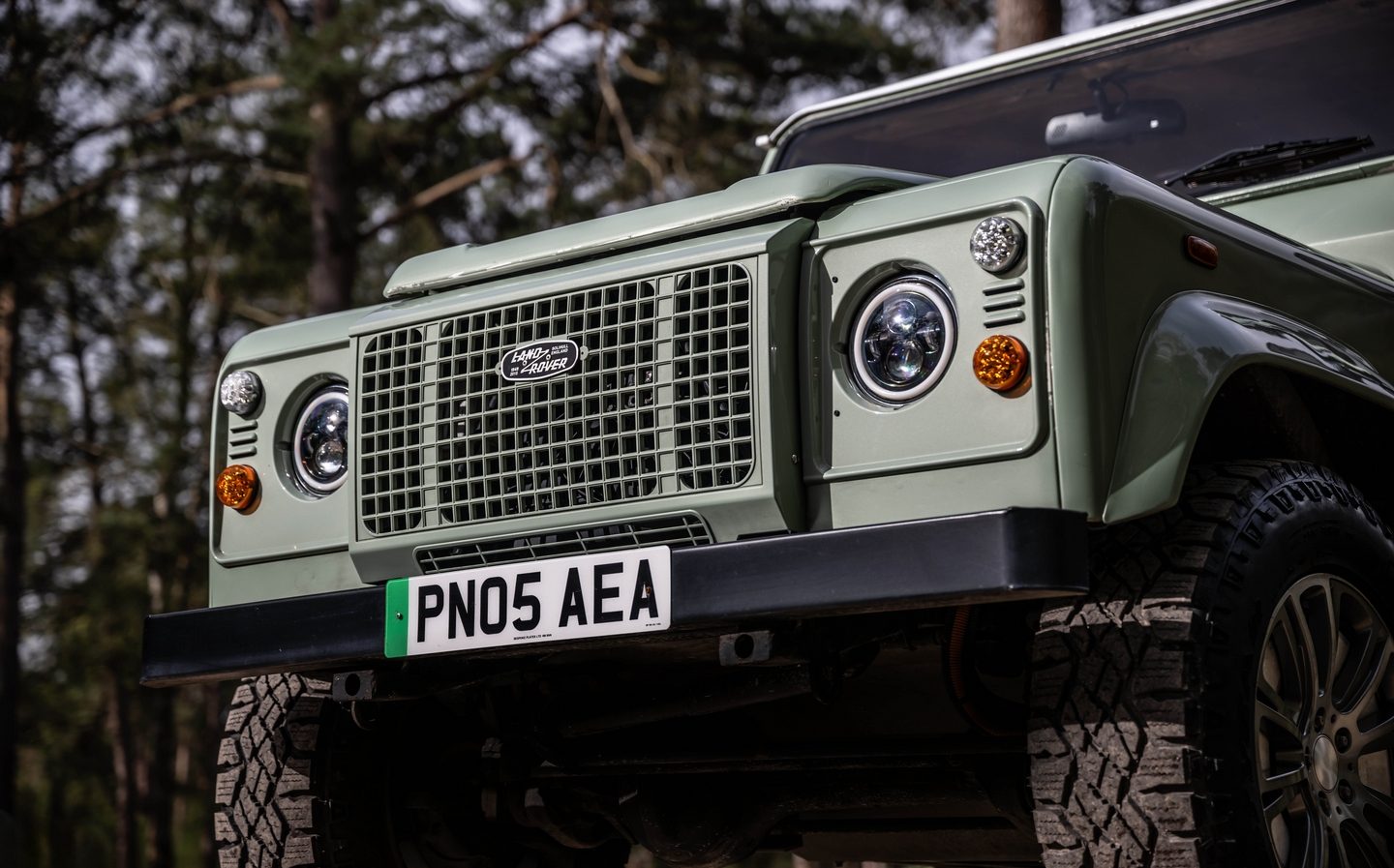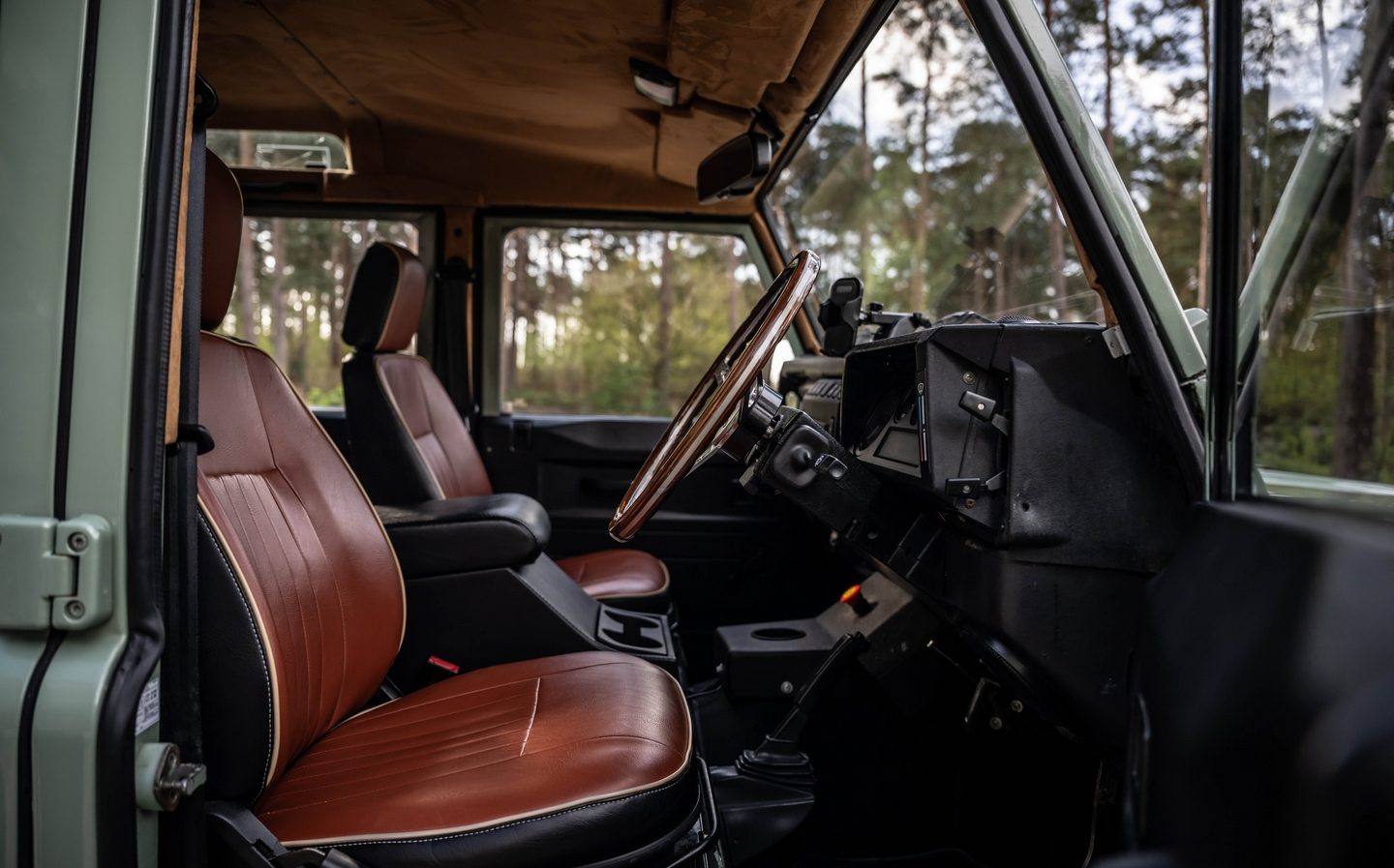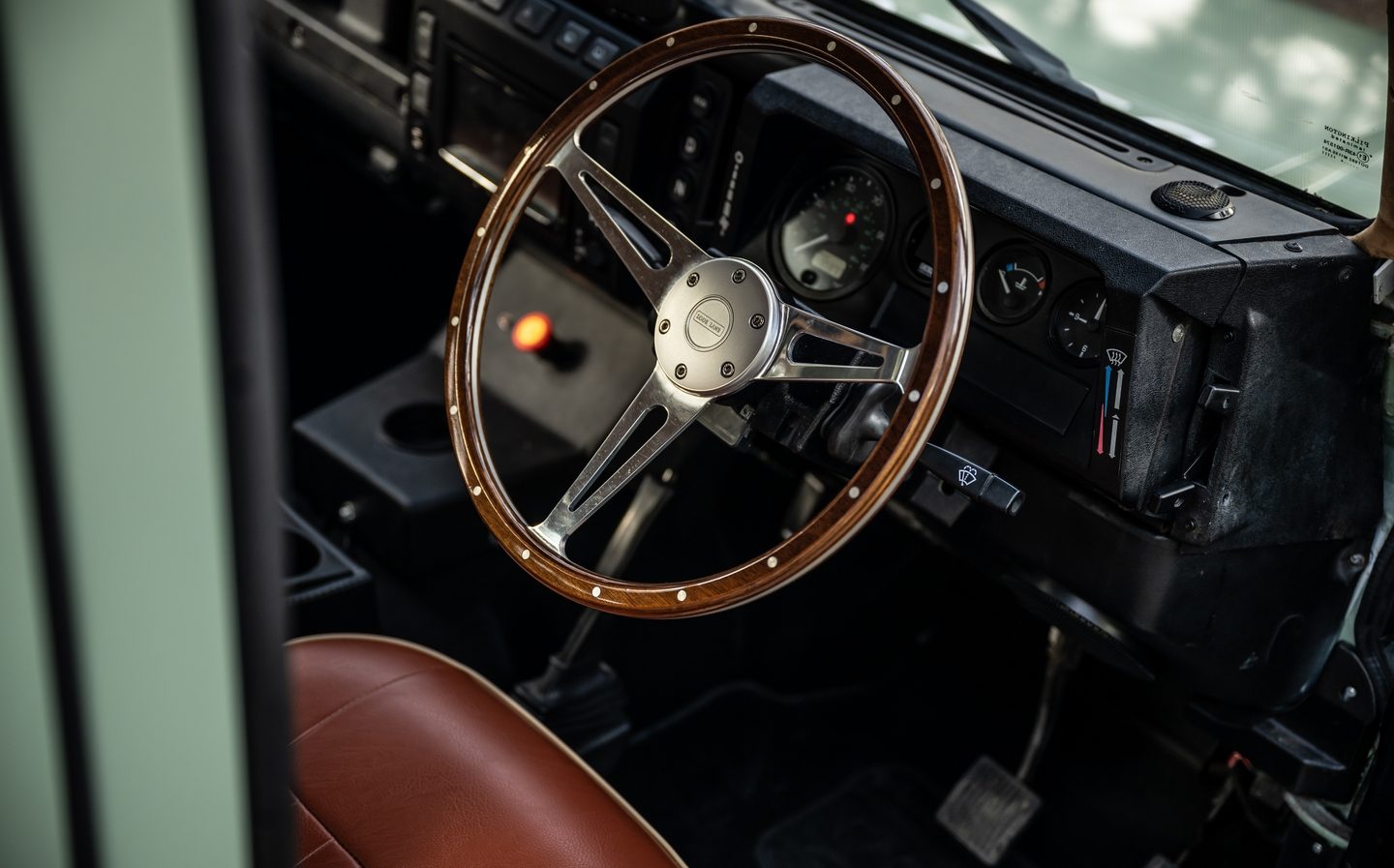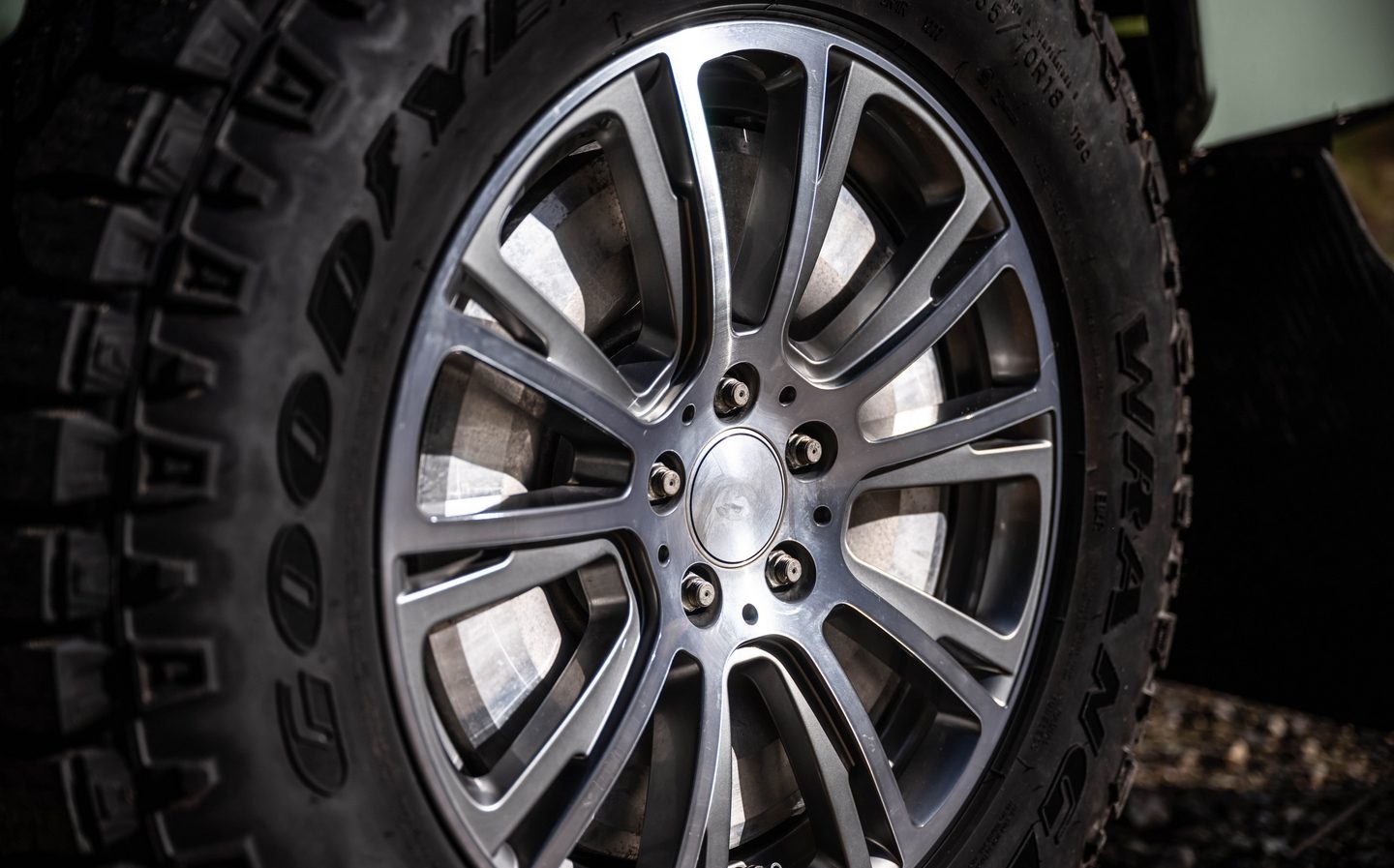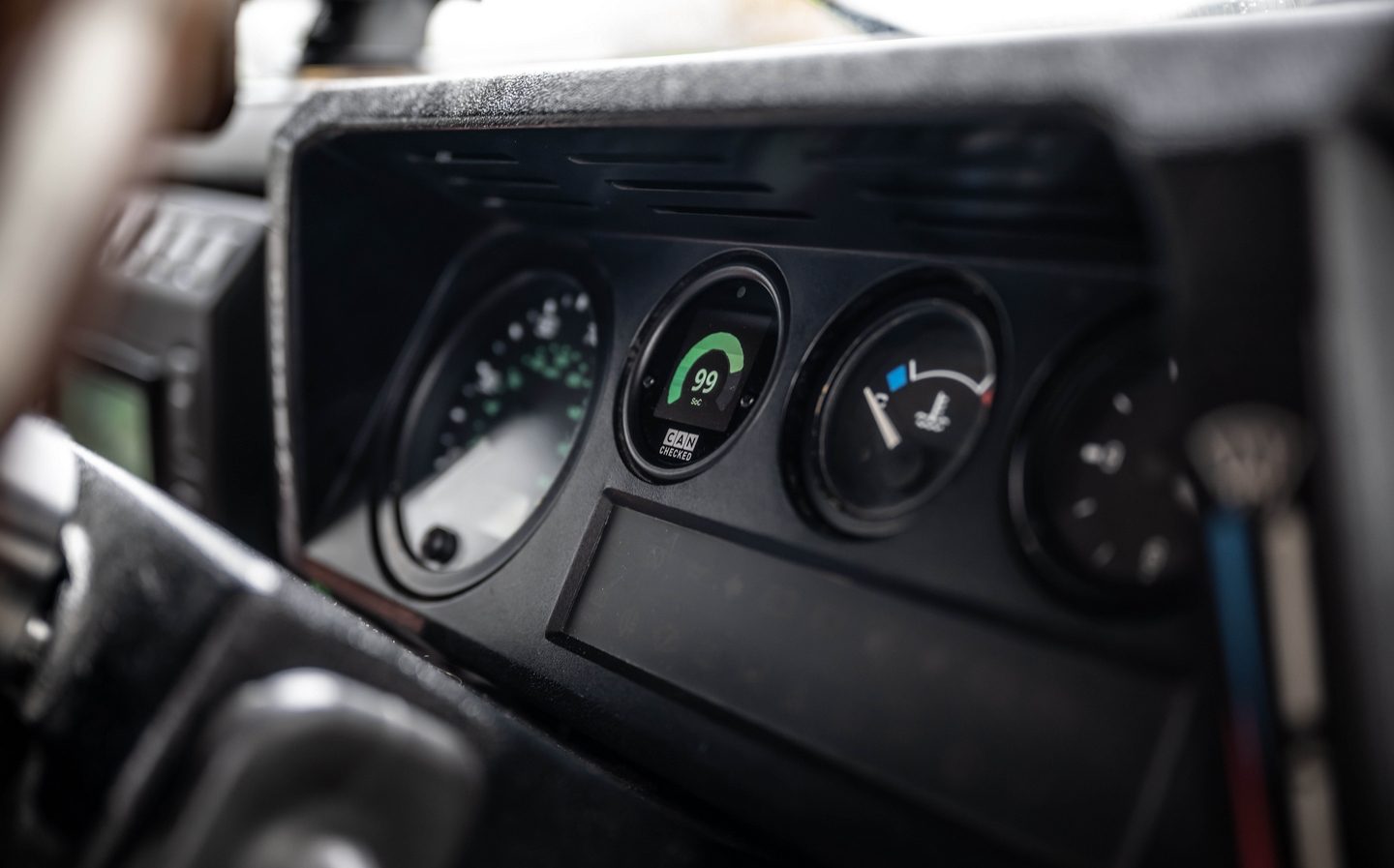Bedeo Defender 110 2024 review: Does electric Landie with in-wheel motors make for a perfect off-roader?
Clever stuff but some of the charm has been zapped
Innovation is ubiquitous in the car industry at present, as companies clamber to find ways of reducing emissions while retaining practicality and, well, the fun factor. The time for evolution has gone, and the time for revolution is upon us. But while we tend to think of this in terms of the car manufacturers that launch their latest hydrogen hypercar or electric estate, it’s easy to forget the small companies aiming to make their mark in a time of great change.
Take Bedeo. Based in Farnham, Surrey, the company has quietly been instrumental in some pretty big electrification projects, including converting Peugeot and Citroën vans to electric power for the manufacturers themselves. But now that electric vans are less niche, and manufacturers have cottoned on to the idea of building them for themselves for a fraction of the price, Bedeo has been left looking for other projects.
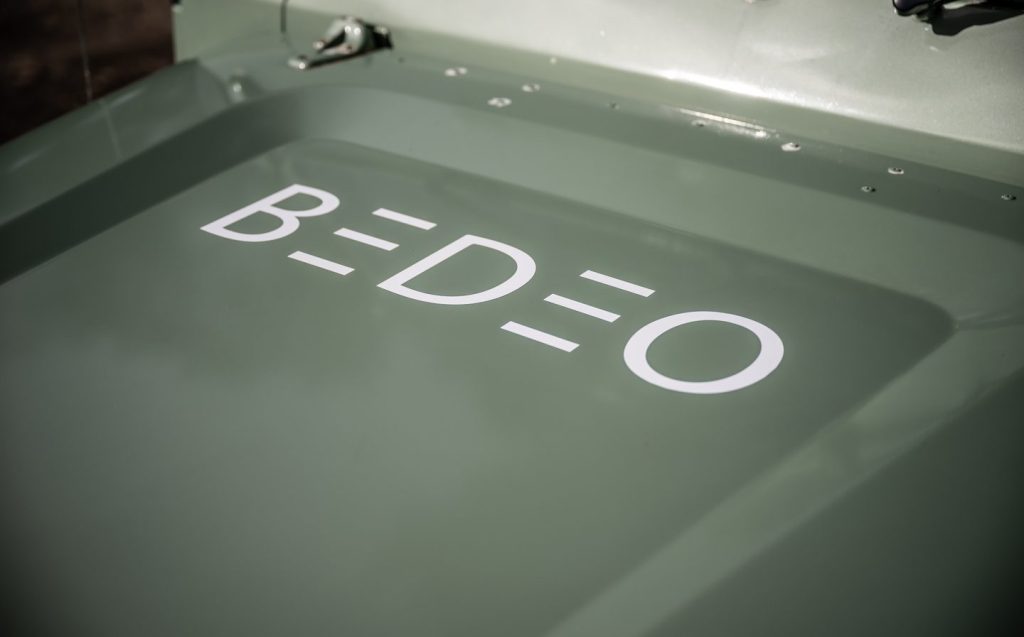
So, it bought Protean, a company that was developing in-wheel motors, and hit upon an idea. If you put the electric motors in the wheel, you can fit them to almost any car, including older models. It’s a plan that’s certainly on-trend, with lots of companies switching tired classics to cleaner electric power, and Bedeo is hoping to market its new solution to garages who want an off-the-shelf conversion kit to offer customers.
The concept didn’t really need proving, as Protean’s motors were already fitted to a high-performance Mercedes E-Class mule, but the company is aiming to tug at British heartstrings a little with its own first conversion. So, here’s a 2005 Land Rover Defender 110 powered solely by electricity.
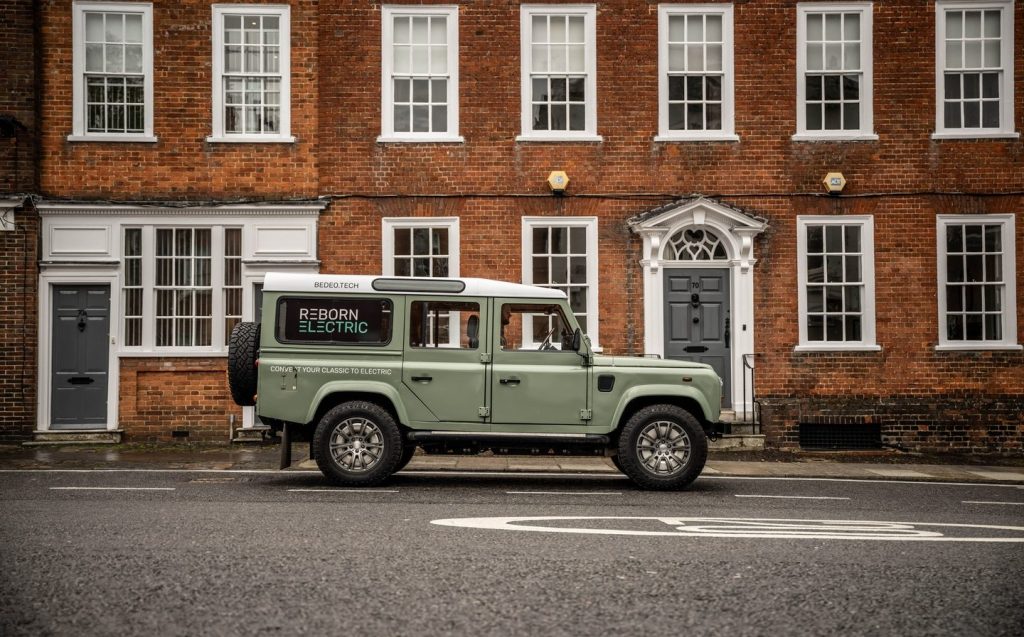
It’s a good candidate for any number of reasons. For starters, the car is much-loved in the UK but it is beset with issues around reliability, comfort, economy and performance. Rust is a big one, too, and it causes most Defenders of this vintage to resemble a sort of orange colander within a few years.
But Bedeo has no interest in sorting that out; our 130,000-mile test car’s scuttle was flakier than a fresh croissant and the bodywork had more bubbles than a glass of the Épernay region’s finest export. If owners want all that stuff sorting, then this is not the company to speak to.
In fact, owners shouldn’t really speak to Bedeo at all. While the company is promoting this electric vehicle tech for Defenders, it’s marketing the system to garages that want to offer electric power as part of a modification or restoration service. Land Rover specialists are high on the list of targets but retail customers will never deal with the business directly. This is the only Defender that will ever roll out of the company’s test garage.
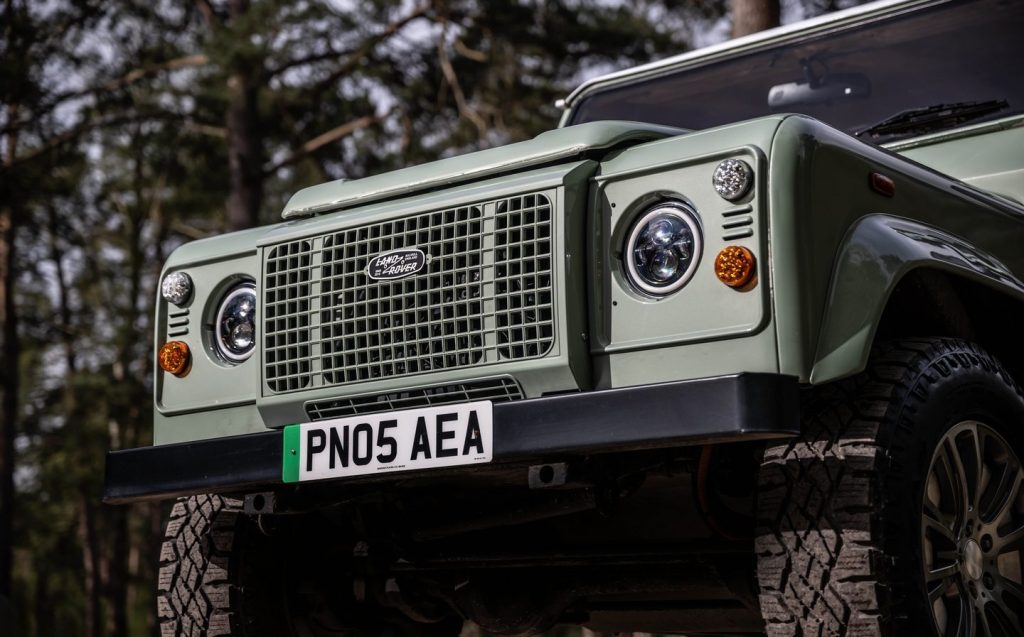
As a result, Bedeo is coy about pricing — it doesn’t really want you knowing how much profit your specialist is making — but it’s happy to talk about what the system can offer. For a start, this is the first off-the-shelf electric conversion kit for the Defender to utilise in-wheel motors (there are others offering EV conversions without hub motors), and that comes with several advantages.
The first is packaging. Because the motors are about 18in across, they fit within a 20in alloy wheel with no trouble at all, and with the brake assembly inside the housing they don’t take up much more space than a standard wheel hub. Which means you can take out the standard Defender’s engine, drive shafts, differentials and brakes without really changing anything under the skin.
That leaves more space for batteries and control systems, and though Bedeo hasn’t done anything with the Defender’s exterior, it has made small changes to the cabin. There’s a battery state of charge gauge and there are buttons for selecting forward and reverse, but that’s about it. Oh, there’s a display embedded in the rear-view mirror, too, but you barely notice that once you’re driving.
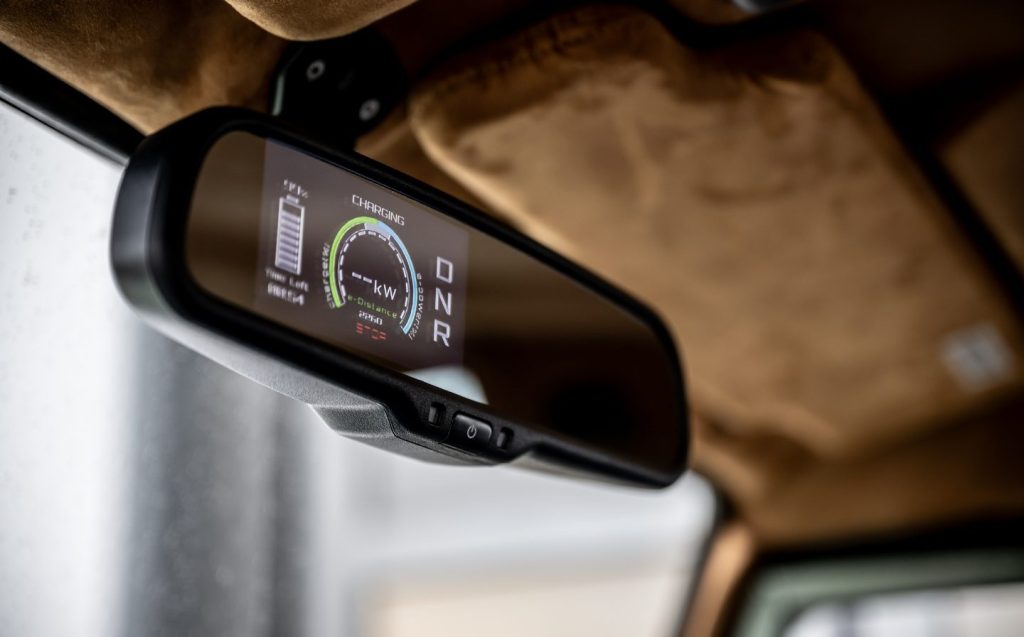
Bedeo has managed to squeeze a battery with a 75kWh capacity into the Defender’s ladder chassis, and that means you can do around 150 miles on a single charge, although that does depend significantly on what you do with the car and the ambient temperatures — cold weather and motorways are range killers in any EV, but due to the slab-sided bodywork of the Defender, it’s as a particular disadvantage aerodynamically. Being electric, it’s even remarkably efficient when you’re on a green lane.
And there’s another advantage, too. Because the power’s already in the wheels, there’s no need to transmit it there using cogs or shafts, and that means there’s no delay or pick-up in the drivetrain. When you push the pedal on the right, the car moves. That makes it much easier to control off-road than a diesel Defender.
It even makes it a little more responsive than a conventional electric motor system, although the difference is subtle. You almost certainly won’t notice it on the road, where delicacy is less important, but it’s there alright and Bedeo is hoping that will swing it for customers who want to keep using their Defender off-road, even if they want to switch to electric power for ecological or reliability reasons.

And because Bedeo has done nothing to the Defender’s suspension and it hasn’t even changed the weight much, the car is just as capable as any other Defender, if not more so. You might expect the difference in unsprung weight — the amount of weight not supported by the suspension — to make some difference to the car’s driving dynamics, but with the heavy battery still in the chassis and the large, relatively lightweight alloy wheels needed to shroud the motors, the Defender doesn’t feel noticeably different. The ride is every bit as lumpy as before on the road but the suspension is still every bit as effective at keeping the wheels on the ground off-road.
The instant torque gets you straight out of trouble, too, and the directness means you’re less likely to get into trouble through sheer clumsiness in the first place.
So, the Bedeo system has its attractions, but without knowing how much it will cost, it’s a difficult one to rate. For those who want to maximise the Defender’s all-terrain capability, it’s a useful system that offers an improvement on some others, and it’s a great showcase of what in-wheel motor tech can do.
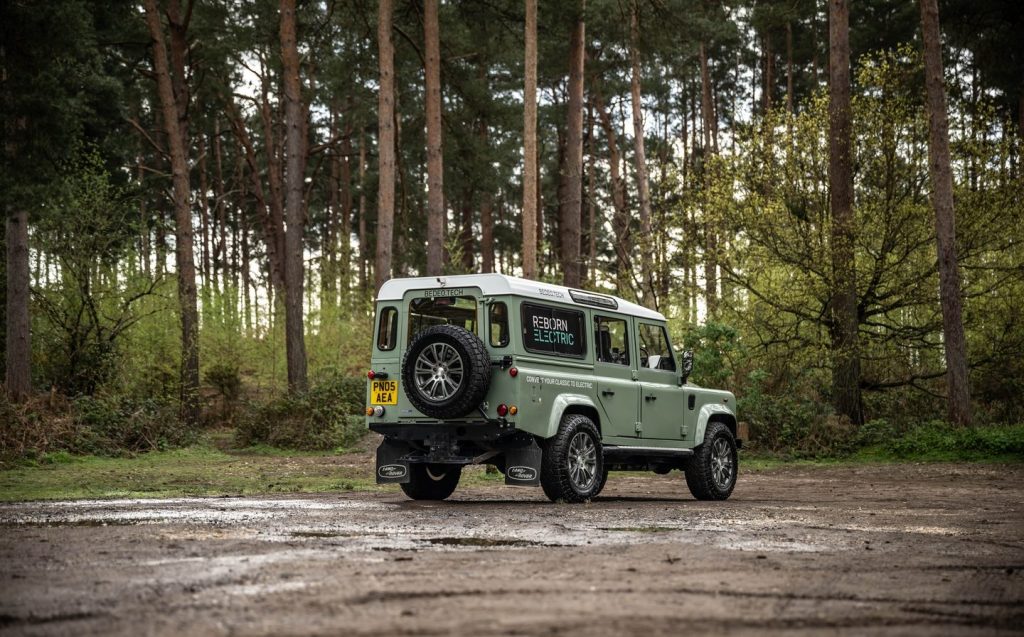
But it has an issue that might leave it out in the cold, and it’s one that seems inherent to electric vehicles and electric conversions in particular: it lacks character. Without the clunkiness, the Defender loses some of its soul, and without the sounds or the engagement of mechanical components, differentiating between one electric powertrain from another is like trying to work out which is Ant and which is Dec.
Related articles
- If you found our review of the Bedeo EV system in a Defender interesting, you might also like to check out our Healey by Caton review, and why this half-million-pound restomod is a little too authentic in its classic car experience
- Alfa GT restomod packs 493bhp twin-turbo V6 from Giulia Quadrifoglio
- Milivié 1 is a modernised VW Beetle restomod with a €570,000 price tag
Latest articles
- Skoda Enyaq 2025 review: Same book, different cover for electric SUV
- Lewis Hamilton wants to design a modern day Ferrari F40 with manual gearbox
- Dacia Bigster 2025 review: The ‘anti-premium’ family SUV that punches above its weight
- Your car’s worn tyres could be being burnt illegally in India, investigation reveals
- Open-top 214mph Aston Martin Vanquish Volante is world’s fastest blow-dry
- F1 2025 calendar and race reports: The new Formula One season as it happens
- Alfa Romeo Junior Ibrida 2025 review: Hybrid power adds an extra string to crossover’s bow
- Top 10 longest-range electric cars: all with over 400 miles per charge (officially)
- Renault 5 Turbo 3E ‘mini supercar’ confirmed with rear in-wheel motors producing 533bhp … and insane levels of torque


